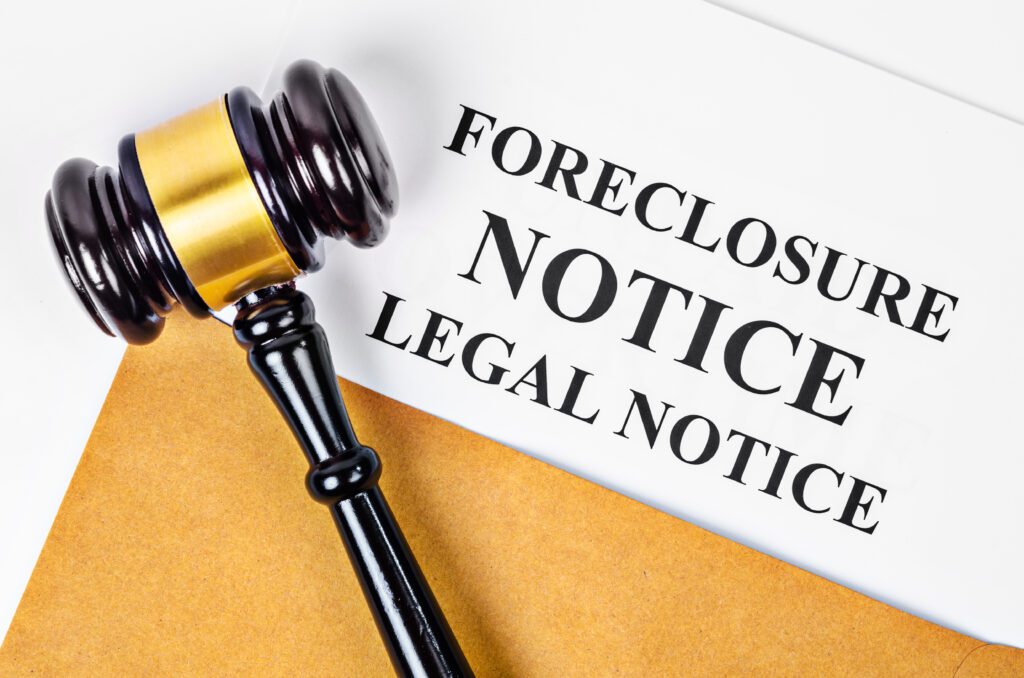February 2024
Commercial Foreclosures Are Steadily Rising

“The market had to adjust to rapid interest rate increases, and investors had to understand new underwriting rules based upon new financing terms,” said Adam Johnson of NAI Hiffman.
“Banks needed more time to reserve for losses and figure out what their federal regulatory oversight may be. So, everybody was on pause in 2023. A lot of these loan maturities should have come up or been foreclosed on last year, but they got pushed into 2024.”
Office tenant rep brokers in San Francisco are routinely asking owners what their loan status is before touring the building, according to Ed Del Beccaro, EVP, San Francisco Bay Area Manager, TRI Commercial/CORFAC International.
It’s a reflection of the rising number of commercial foreclosures nationwide, according to recent data from ATTOM.
The firm reported a “steady, significant climb” in commercial foreclosures over the years, from a low of 141 in May 2020 to the current figure of 635 in January 2024.
In January 2014 there were 740 commercial foreclosures nationwide. Over the next decade, ATTOM tracked fluctuations, witnessing the highest spike in October 2014 with 889 foreclosures, indicating the ongoing market corrections and adjustments.
Del Beccaro tells GlobeSt.com that tenant rep brokers who have tenants renewing but the building is in foreclosure, or the note is being sold, worry if leases and proposed offers will be honored.
“Empty office buildings are a problem if they are old, have too large a floor plate, and are not seismically upgraded,” he said. “These will be hard to convert to other uses and in some cases torn down. Will 2025 be any better? Maybe.”
Del Becarro said that 10 or more office buildings have been foreclosed on, or loans sold or deeds in lieu have been transacted in the Bay Area past six months.
“Retail has its issues due to online shopping but is not as hard hit as the office market,” he said. “Multifamily buildings have seen some foreclosures, especially new mixed-use residential retail projects. The industrial market is the healthiest with vacancies increases but no foreclosures.
“Tenants are renewing their leases but shrinking in place reducing their office footprint sometimes as much as 50 percent, reflecting remote work trends,” he said.
“Vacancies in many office markets have reached on average 20 percent plus and over 35 percent in Downtown San Francisco. Every week it seems a major institution owner is giving back a building to the lender of a joint venture partner.”
“Developers and investors who have loans due see higher interest rates and lower loan-to-value ratios whereby they have to put in expensive equity infusions to renew a loan.
“If the loan is non-recourse, many don’t hence the increasing trend of more foreclosures.
ATTOM CEO Rob Barber said in prepared remarks that this uptick signifies not just a return to pre-pandemic activity levels but also underscores the ongoing adjustments within the commercial real estate sector as it navigates through a landscape transformed by evolving business practices and consumer behaviors.
In Chicago, David Camins, Principal, Xroads Real Estate Advisors, tells GlobeSt.com that the current foreclosure activity has slowed – as landlords are reworking with their lenders to extend and restructure loans to avoid loan defaults.
“The unexpected pace of rising interest rates from March 2022 into 2023 made refinancing difficult even for performing properties,” he said. “Despite rates having leveled off and spreads having tightened, the gap between outstanding maturing debt and available new debt remains insurmountable.”
Because 2023 was largely a discovery year, Adam Johnson, executive vice president, Capital Markets Group – Office, NAI Hiffman, tells GlobeSt.com that he’s starting to see an uptick in foreclosures.
“The market had to adjust to rapid interest rate increases, and investors had to understand new underwriting rules based upon new financing terms,” Johnson said.
“Banks needed more time to reserve for losses and figure out what their federal regulatory oversight may be. So, everybody was on pause in 2023. A lot of these loan maturities should have come up or been foreclosed on last year, but they got pushed into 2024.”
Johnson said that now that rates have settled and banks are better positioned to absorb the losses, more lenders are commencing the foreclosure or short sale process to finally get these bad loans off their books.
“This will bring more bank-owned properties to market, and fortunately, there’s plenty of dry powder available to acquire them at reduced prices,” according to Johnson.
ATTOM’s report showed that in January 2024, California had the highest number of commercial foreclosures for the month (181) – a 72 percent increase from the previous month and a 174 percent increase from last year.
New York had a total of 59 commercial foreclosures in January 2024, a 12 percent decrease from last month and a 12 percent decrease from a year ago.
Texas saw a 17 percent increase from last month and a 143 percent increase from last year. New Jersey saw a 38 percent increase from last month and a 157 percent increase from last year.
Florida saw an 18 percent increase from last month and a 42 percent increase from last year.
Louis B. Fisher III, National Director, SVN Auction Services, tells GlobeSt.com the asset/vertical product type experiencing the brunt of the increase are within the office and retail sectors as employees have not returned to their offices and consumers have not returned to shop at standalone retail stores and outlets.
He said CMBS loan delinquencies are expected to double from 2.25% in November 2023 to November 2024 with the US CMBS office delinquency rate alone, rising 64 basis points in November 2023, the largest increase since November 2020 signaling the impact of COVID-19.
“Repurposing these type assets for alternative space use and consumption remains a priority looking forward,” Fisher said.
Click here to read the full article in GlobeSt.
About Hiffman National:
Based in the Chicago area, with an additional five regional hubs and 30 satellite offices, Hiffman National provides superior property management, project services and accounting services to a diverse portfolio including office, medical office, retail and industrial properties nationally. The firm’s comprehensive property management platform and attentive approach to service contributes to client NOI and has helped the firm to more than double in size in five years. Hiffman National is an award-winning company with more than 250 employees strategically located throughout North America.
About NAI Hiffman:
NAI Hiffman is one of the largest independent commercial real estate services firms in the US, with a primary focus on metropolitan Chicago, and part of the NAI Global network. We provide institutional and private leasing, property management, tenant representation, capital markets, project services, research, and marketing services for owners and occupiers of commercial real estate. To meet our clients’ growing needs outside of our exclusive NAI Hiffman territory, we launched Hiffman National, our dedicated property solutions division, which provides property management, project services, and property accounting services across the country. NAI Hiffman | Hiffman National is and award winning company headquartered in suburban Chicago, with more than 250 employees strategically located throughout North America.


